Exploring the Emotional Spectrum of Holi: A Colourful Psychological Journey
- Students
- March 7, 2025
- Viva Education
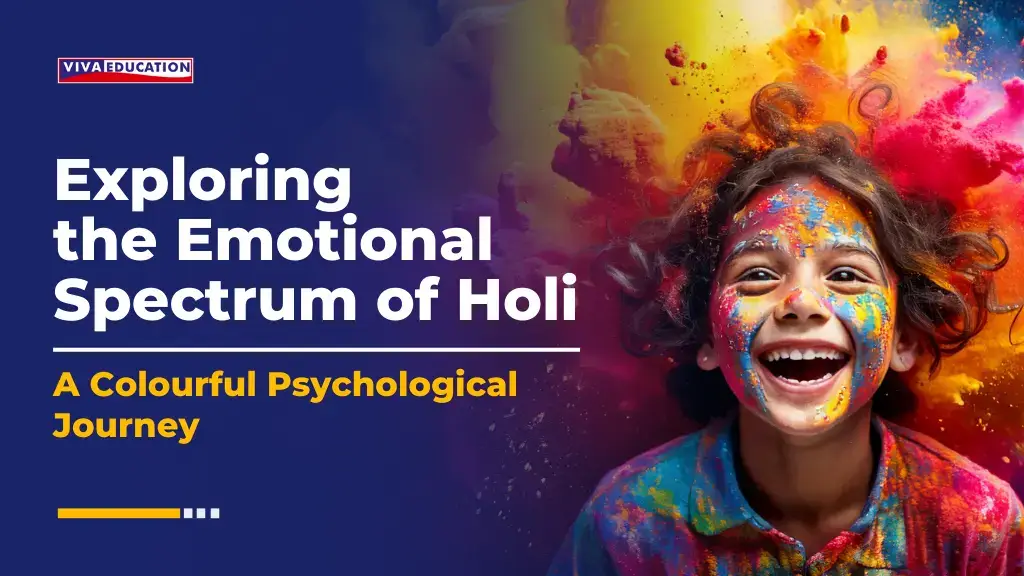
Holi, the festival of colours, is a time of joy, togetherness and new beginnings. It welcomes spring with open arms and reminds us that good always triumphs over evil.
Rooted in the legend of Holika and Prahlad, the festival symbolises faith, resilience, and the power of righteousness. But Holi is more than just mythology; it’s about laughter, love, and breaking barriers, as seen in the playful traditions inspired by Lord Krishna and Radha. It brings people closer, dissolving differences and filling the air with warmth and celebration. Through its colours, rituals, and festivities, Holi is a beautiful expression of life itself.
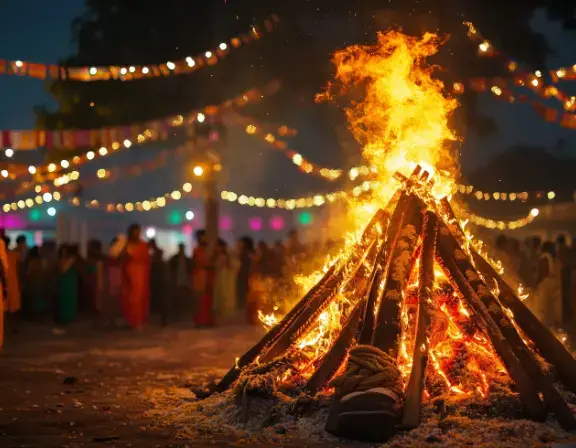
In this article, we understand the meaning behind Holi colours, exploring the meaning behind each shade and how they connect to our emotions and traditions.
When is Holi 2025?
Holi is celebrated yearly on the full moon (Purnima) of the Hindu month of Phalguna, usually in February or March. In 2025, Holi will be on March 14, with Holika Dahan on the evening of March 13.
Holika Dahan, also called Chhoti Holi, is when people gather around bonfires, burn away negativity, and pray for happiness and good fortune. The next day, Rangwali Holi is all about colours, laughter, and togetherness; families and friends come together to splash colours, dance, and celebrate the arrival of spring.
The Language of Colour: More Than Just Fun
Indian cultural and spiritual values are infused in the meanings behind the colours used during festivals. Every colour in the Holi celebration contains ancient beliefs and emotional and traditional elements that enhance its meaning.
Colours have been essential to Indian rituals and festivals for multiple generations because they shape emotions and social customs. Holi’s explosion of vibrant colours creates a unique and lively experience, bringing people together in a joyous celebration.
This tradition bridges all social and gender boundaries because it unites people from every age group in a shared expression of happiness.
The Meaning of Holi Colours
Knowing the meaning behind each colour makes the festival even more special. Let’s explore what each colour of Holi stands for.
Red symbolizes love, energy, good fortune, and passion. Red is also the colour of power, energy, and warmth. In Hindu mythology, Goddess Durga wears red to show her strength and bravery as she protects the world from evil. Red also means love and new beginnings, like Holi brings people together to celebrate happiness and fresh starts.
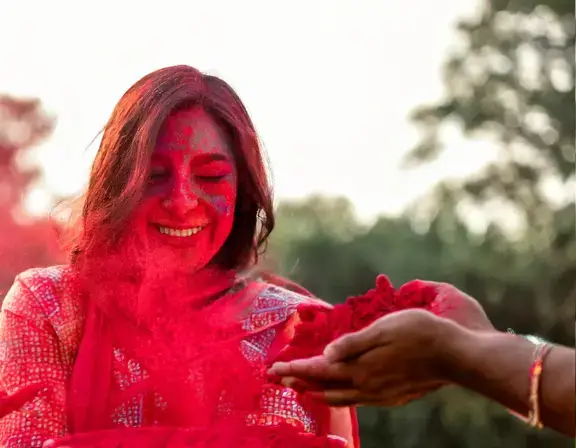
The happy and vibrant hue of Yellow signifies peace, wisdom, and inner joy. Yellow connects to sacred turmeric and serves as the symbol for the protective Lord Vishnu and holy spaces. Yellow is believed to carry spiritual wisdom, helping saints and sages inspire new beginnings through their spirituality.
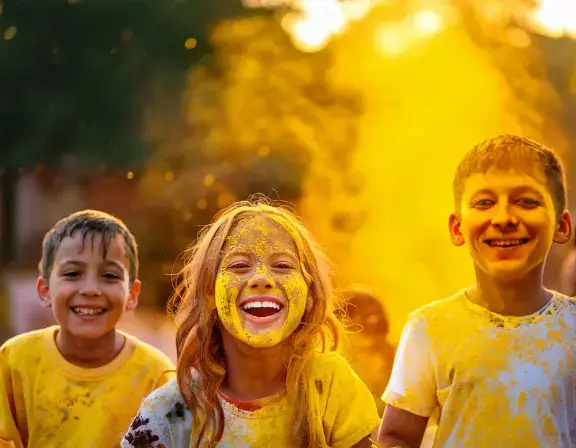
Blue is the colour of calmness, courage and devotion. It is associated with Lord Krishna, who had playful and wise psychological components. The sky and ocean are blue; thus, blue represents stability and possibilities.
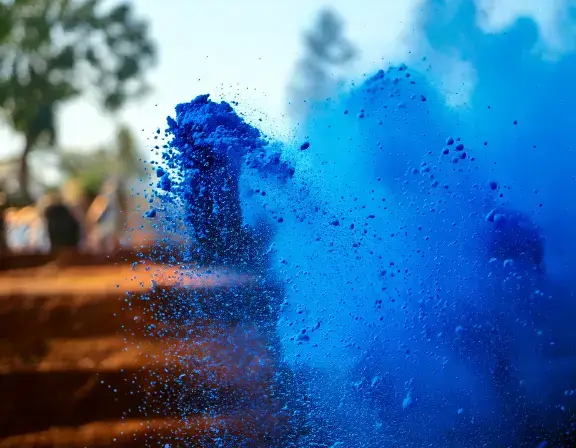
Green is the colour of nature. It means growth, renewal, and hope. It symbolises spring, the harvest, and the cycle of life. Green means prosperity and abundance of a good harvest in farmers’ eyes. Also, it represents harmony and balance of life.
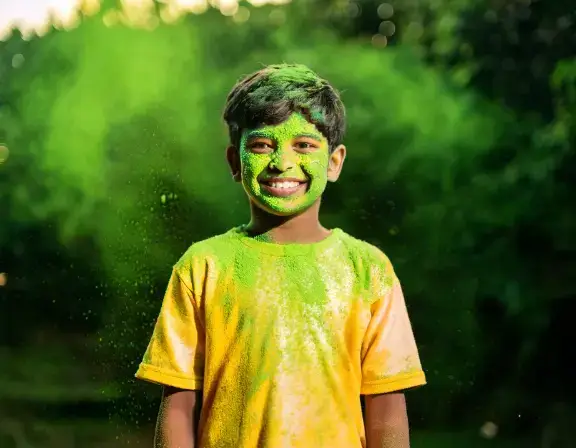
The happy colour Pink represents love and kindness. This plays with the playful spirit of Holi, most of which is in children. Pink, unlike red, represents softer feelings of joy and affection, not the deep emotions red represents.
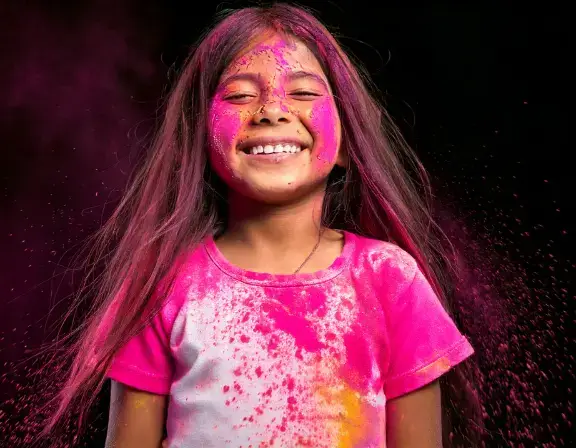
Holi Around the World
In today’s world, Holi is celebrated by Indian communities in many countries. From Southeast Asia to the UK, this festival is celebrated in many ways.
In the United States, large gatherings bring people together to enjoy the festival’s playful spirit. In the United Kingdom, events featuring traditional Holi festivities take place in various cities. Australia also sees widespread Holi celebrations, where people embrace the festival’s joy and meaning. Holi has gained popularity in Spain, with many communities participating in the vibrant tradition. South Africa also hosts colourful celebrations, where people come together to mark the occasion.
These global celebrations reflect Holi’s universal message of happiness, unity, and renewal, showing how traditions can bring people closer, no matter where they are.
From Natural Dyes to Modern Colours: An Evolving Tradition
Did you know that Holi’s colours were made from flowers earlier? Marigolds, hibiscus, turmeric, sandalwood, and other plants are used. These natural powders are not only beautiful but also gentle on the skin. People prepare colours with dried petals and herbs at home, making the festival safe and eco-friendly.
However, synthetic colours have become widespread today, often containing harmful chemicals that can affect health and the environment. While Holi has evolved, becoming a large-scale celebration, there is a growing effort to revive the tradition of using herbal colours. Choosing natural, skin-friendly colours helps bring back the festival’s true spirit—celebrating nature in harmony.
Embracing The Joy and Meaning of Holi Colours
Every colour tells a story, from the warmth of red to the cheerfulness of yellow, reminding us to embrace life with love and positivity. Holi is a celebration of togetherness, laughter and fresh beginnings. It teaches us to embrace negativity and welcome joy with open arms.
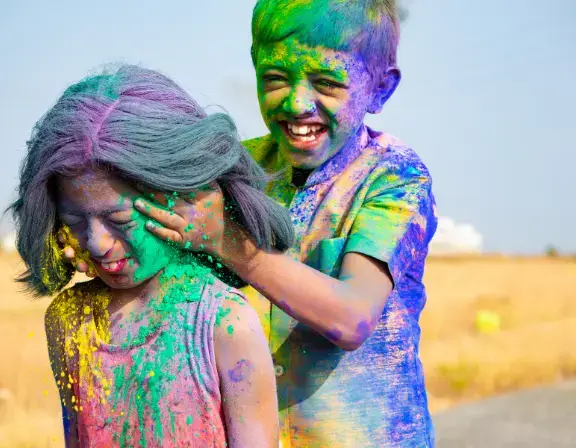
As we play with colours, let’s also remember the values Holi represents—kindness, unity, and respect for traditions. Choosing natural colours and celebrating responsibly keeps the spirit of Holi alive for generations to come.
So gather your loved ones, spread happiness, and make this Holi a memorable celebration!
Happy Holi!
>> Please Share





